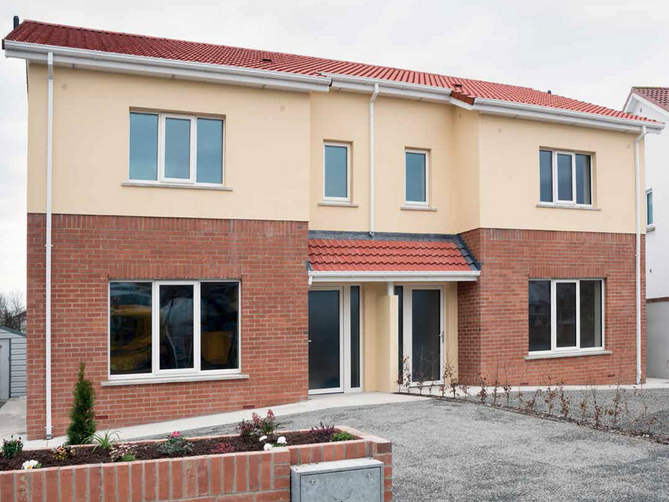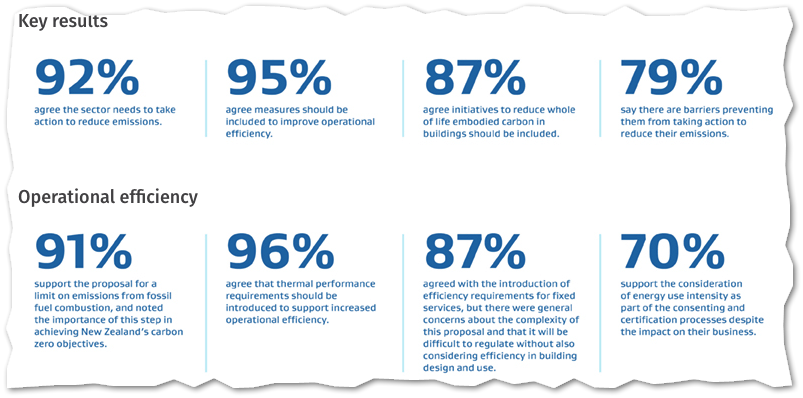This excellent top-level round-up of multiple UK retrofit programmes sadly reveals how many were really poorly done. The most recent was a politically driven voucher system that lasted less than a year. Bottom line? 1. Focus on the building thermal envelope and design stage overall energy model (ie take a holistic whole dwelling retrofit approach). 2. Ignoring the tricky bits …
Ireland nails affordable Passive House

They won’t win points for style, but these semi-detached, two-storey Irish homes fit seamlessly amongst their neighbours. This is a very familiar UK building style, now made better: both Passive House and affordable. The builder and architects’ depth of experience with Passive House was clearly key, according to an in-depth article by Passive House + magazine. The goal of affordability …
MBIE responds to climate change consultation

MBIE has provided its initial feedback based on consultation with industry on its “Building for climate change”. There are some promising signs from industry as the snapshot below indicates. We developed our own embodied carbon early design calculator based on the HPCD Handbook data. We also use LCAQuick from BRANZ for more detailed design-level studies. Based on this work, we …
Join US expert on marketing PH to homeowners

I’m looking forward to this seminar on how to effectively market Passive House and encourage those working on and designing Passive Houses to attend. This Zoom seminar is hosted by the Passive House Academy New Zealand on 29 June 2021 at 11am. It features John Oppermann, a US real estate agent (and executive director of the Earth Day Initiative), who …
HPCD summaries released by BRANZ
If you haven’t already reviewed the technical draft of our High-Performance Construction Details (HPCD) Handbook, BRANZ has just published two great summaries that pull out the high-performance wall and roof assemblies (elements). The wall elements from the HPCD Handbook are summarised with the results reproduced in BU660 Residential walls with high thermal performance. The roof elements from the HPCD Handbook …
Aus Passive House vs passive solar misses the point
If you haven’t heard about the Passive Solar versus Passive House bash up argument in Australia, you missed an entertaining example of people talking past each other. I am reminded of my long-running, friendly argument with a local passive solar enthusiast. In an excellent follow-up article, Dr Paola Leardini points out the starkly obvious: we need both climate sensitive design …
Leaky buildings aren’t over: thermal bridges create moisture issues
PREDOS director Rory Crosbie’s article in BRANZ’s Build magazine mostly argues for a national home warranty scheme based on the Canadian model. He does briefly touch on the inadequacy of the current New Zealand Building Code (of course, I agree): “Weathertightness aside, the New Zealand Building Code performance requirements of a building’s external fabric is still way below international standards. …
Does what it says on the tin

A study in the UK of 97 certified Passive House projects shows predicted heating demand was accurate in both flats and houses. Measurements were recorded for over a year of both heating demand and internal temperature. Results: average measured heating demand 10.8 kWh/m2/year predicted heating demand 11.7 kWh/m2/year. The study’s authors considered this statistically identical. Several of the buildings in …
“Must do better”: Education Ministry sets new standards for school buildings

The Ministry of Education manages a huge property portfolio (>15,000 buildings, 2100 sites, >$31 billion replacement value). There are a lot of problem buildings, including some that are only a few years old. It has released a new design guide for school buildings, requiring a higher standard in some key respects than the current Building Code. Why doesn’t the whole …
